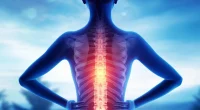Heart failure
What’s that?
Heart failure (HF) is a pathologic condition caused by the failure of the heart as a pump providing adequate blood circulation. It is a manifestation and consequence of pathological conditions affecting the myocardium or complicating heart function: ischemic heart disease, heart defects, arterial hypertension, diffuse lung diseases, myocarditis, myocardial dystrophy (including thyrotoxic, sports, etc.), myocardiopathies (including alcoholic myocardiopathies) and others.
About the disease
The consequence and manifestation of heart failure is a decrease or increase in blood filling, blood flow, or/and pressure in one or another central and peripheral circulatory links. These changes occur not only as a direct mechanical consequence of impaired heart pumping function but also as a result of inadequate adaptation reactions. Such reactions include tachy- and bradycardia, changes in peripheral and pulmonary vascular resistance, “centralization” of blood circulation and other forms of redistribution of blood flow, fluid and sodium retention, hypertrophy and dilation of individual heart chambers, etc., as well as in the cardiovascular system.
Hemodynamic disorders, in turn, lead to pathological changes in the heart and blood vessels, as well as in other organs and systems, and are accompanied by disorders that limit the vital activity of the patient and, ultimately, threaten his life.
Classification of heart failure
Depending on the course, acute and chronic forms of heart failure are distinguished. In the first case, the pathology develops rapidly, accompanied by a significant deterioration of the patient’s condition, and, in the absence of medical care, is very likely to lead to death. Chronic heart failure progresses slowly, accompanied by a gradual decrease in tolerance to physical activity.
Localization of the pathological focus allows us to distinguish three types of heart failure:
- right ventricular;
- left ventricular;
- mixed.
The origin and mechanism of development of pathology make it possible to distinguish overload, myocardial, and combined forms.
Features of the course and the severity of the signs of the disease determine several stages of heart failure:
- Stage I: symptoms occur with significant physical exertion and quickly subside after rest;
- Stage IIA: dyspnea and other symptoms occur with minor physical activity; swelling appears and disappears;
- Stage IIB: accompanied by frequent attacks of dyspnea, persistent edema, heart pain, and rhythm disturbances;
- Stage III: symptoms are pronounced at rest; physical activity is almost impossible because the heart cannot supply the necessary blood to the tissues.
The degree of heart failure can also be determined according to the New York classification, which distinguishes four functional classes (FC) of pathology:
- FC 0: no symptoms;
- FC I: problems appear with above-average exertion, such as brisk walking, jogging, and hill-climbing;
- FC II: the patient does not feel well with usual physical activity;
- FC III: symptoms of insufficiency occur even with a small activity (e.g., when walking on a flat surface, the patient has to stop to rest constantly);
- FC IV: symptoms occur even with minimal exertion and at rest.
Symptoms of heart failure
The signs of heart failure are almost identical in men and women. The classic signs of the disease are:
- dyspnea on physical exertion, as well as in the supine position;
- swelling of the legs, more pronounced in the afternoon; in severe cases, fluid begins to accumulate in the abdomen and lungs;
- constant feeling of fatigue, weakness, and sometimes nausea;
- intermittent dry cough;
- increased urination at night.
Other signs are related to heart abnormalities. The patient may complain of pain, chest pain, tachy- or bradycardia (fast or slow heartbeat), and arrhythmia.
The symptoms of acute heart failure are so vivid that it is impossible to ignore them. The attack begins quickly, and the person’s condition deteriorates rapidly. There is severe shortness of breath, forcing him to sit down, coughing with the separation of frothy, pinkish sputum and cold sweat. The skin turns pale; the lips acquire a bluish tint. This condition requires immediate medical attention.
Causes of heart failure
The most common causes of the disease include various pathologies of the heart and blood vessels: ischemic heart disease in all its manifestations, heart rhythm, and conduction disorders, congenital and acquired defects, inflammatory processes (myocarditis, pericarditis, endocarditis), cardiomyopathies, arterial hypertension. Heart function can also be affected by the state of the respiratory system (COPD), diabetes mellitus, and other endocrine pathologies.
Among the risk factors that may increase the likelihood of developing HF, the most important are:
- bad habits: smoking, alcohol abuse;
- frequent stress;
- hypodynamia or, conversely, extreme physical activity;
- some infections;
- overweight;
- insomnia, chronic fatigue.
- heredity
Diagnosis
Diagnosis of acute heart failure is not tricky; several symptoms accompany the condition. Doctors first buy dangerous disturbances in the body and then gradually examine the patient as it stabilizes to identify the cause. In the chronic form, it is essential to accurately establish the degree and class of pathology and determine what disease led to this condition. To do this, standard methods are used: collection of complaints and anamnesis, general examination, and measurement of body parameters. Additionally appointed:
- ECG, Holter monitoring;
- daily blood pressure monitoring;
- stress tests: bicycle ergometry, treadmill test;
- spirometry;
- chest X-ray;
- ultrasound of the heart, abdominal organs, kidneys (if indicated);
- laboratory diagnostics: general blood and urine tests, blood biochemistry (determining glucose levels, cholesterol, and other lipid fractions), and coagulogram.
If necessary, the list of tests can be expanded to maximize the complete evaluation of the body’s condition.
Treatment of heart failure
The scheme of treatment of heart failure in men and women depends on its cause, form, and severity of the main symptoms. In the acute state, as well as with a severe degree of chronic HF, the first priority is the stabilization of vital signs of the body. The patient is prescribed diuretics and defoamers to relieve the lungs, nitrates, and cardiac glycosides of rapid action to facilitate heart function and improve blood supply. If necessary, oxygen therapy (inhalation of oxygen) is used. A person should observe complete rest. After stabilization of the condition, supportive therapy is prescribed.
The treatment regimen for chronic heart failure is selected on an individual basis. The following groups of drugs are prescribed:
- nitrates;
- cardiac glycosides;
- blood thinners (anticoagulants);
- blood pressure medications;
- diuretics;
- medications to stabilize the heart.
It is essential for the patient to change his lifestyle: give up salt and fatty foods, stop smoking and drinking alcohol, avoid stress, and get enough sleep. Taking care of daily physical activity is necessary, which should not cause pain or shortness of breath. Walking or swimming are excellent.
In severe cases, when conservative treatment options show no effect, different surgical approaches can be indicated:
- Ventricular Assist Devices (VADs): VADs are mechanical pumps that support heart function and blood flow in people with weakened hearts. They can be used as a temporary solution while waiting for a heart transplant or as a long-term solution in patients who are not candidates for transplantation.
- Heart Transplant: In severe cases where other treatments have failed, a heart transplant may be the best option. This involves replacing the failing heart with a healthy heart from a deceased donor. Heart transplants have strict eligibility criteria and require lifelong follow-up and medication to prevent organ rejection.
- Cardiac Resynchronization Therapy (CRT): Though not a surgery in the traditional sense, CRT involves the implantation of a device that improves the heart’s timing function for patients with heart failure. It’s particularly useful in patients who suffer from dyssynchrony, where the heart’s ventricles beat out of sync.
All these treatment options are available in more than 770 hospitals worldwide (https://doctor.global/results/diseases/heart-failure). For example, Cardiac resynchronization therapy with pacemaker (CRT-P) can be performed in 11 clinics across Turkey for an approximate price of $12.5 K (https://doctor.global/results/asia/turkey/all-cities/all-specializations/procedures/cardiac-resynchronization-therapy-with-pacemaker-crt-p).
Prevention
The prevention of heart failure is, first of all, the correction of lifestyle. As with treating pathology, it is essential to devote time to nutrition, physical activity, a daily regimen, avoiding stress, and having a good rest. Patients with excessive body weight should reduce their weight. It is also essential to undergo preventive examinations even without symptoms, regularly visit the doctor, and fulfill all his recommendations.


